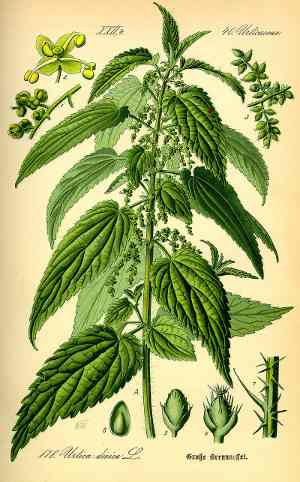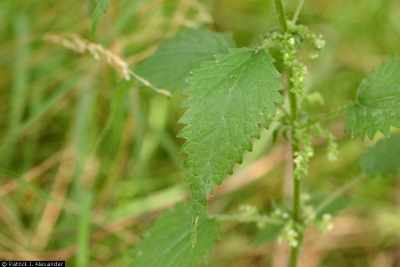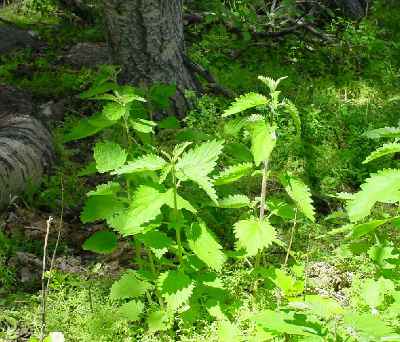Stinging Nettle The Best Wild Edible Food

Stinging Nettles grow as either an annual or perennial. Stinging Nettles have rhizomes as part of its root system. The stinging hairs are usually on the oppositely arranged leaves and the plants stems. The leaves have three to five, rarely up to seven veins and the leaf margin are usually serrate and coarsely toothed. The flowers and later the seeds are formed in numerous bracts.
One look-a-like of the Stinging Nettle is the Wood Nettle. They can be differentiated easily because the Wood Nettle has flowers both above and below the top leaves. Stinging nettle has all of its flowers below the top most leaves.
Another look-a-like is the False Nettle. False Nettle has its flowers in tight clumps and long petioles.
Before picking Stinging Nettle you need to know a little about the stinging part. As I said above the plant is covered with stinging hairs. What happens is when the hair is mature it is sharp as can be and although the hair is small it will still pierce your skin. When this happens the tip of the hair breaks off in you and then releases a host of chemical acids and Neuro-transmitters. This of course will cause severe irritation and a fair amount of pain. Don't worry it is far from lethal. It is just the plant's way of preventing animals from eating it. If it didn't have this stinging defense it would quickly go extinct because all of the animals would favor it over other plants due to its super high nutritional value.

It is good practice to harvest the leaves and stems in the spring to eat. During the summer months you can do that as well be the older leaves are more conducive to dehydrating in the sun and saving for making tea during the winter months when plants are scarce.
Boil or steam the younger plants which will get rid of the sting. Stinging Nettles pack a huge nutritional punch. This plant is one of the most nutritious plants on the planet. Stinging Nettle is not your typical edible weed. Stinging Nettle has over 30% crude protein, lots of iron and 4 times as much vitamin C as an orange!
Stinging Nettle also is a powerful medicine. Learn more here. Stinging Nettle Medical Benefits


